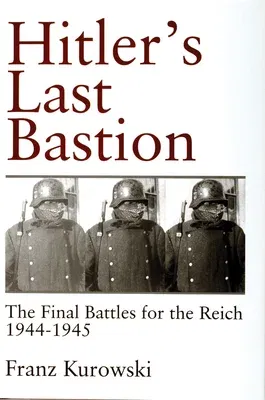Franz Kurowski
(Author)Hitler's Last Bastion: The Final Battles for the Reich 1944-1945 (Revised)Hardcover - Revised, 19 March 1998

Qty
1
Turbo
Ships in 2 - 3 days
In Stock
Free Delivery
Cash on Delivery
15 Days
Free Returns
Secure Checkout

Part of Series
Schiffer Military History
Print Length
432 pages
Language
English
Publisher
Schiffer Military
Date Published
19 Mar 1998
ISBN-10
0764305484
ISBN-13
9780764305481
Description
Product Details
Author:
Book Edition:
Revised
Book Format:
Hardcover
Country of Origin:
US
Date Published:
19 March 1998
Dimensions:
23.65 x
16.18 x
4.04 cm
Genre:
1940's
ISBN-10:
0764305484
ISBN-13:
9780764305481
Language:
English
Pages:
432
Publisher:
Series:
Weight:
907.18 gm